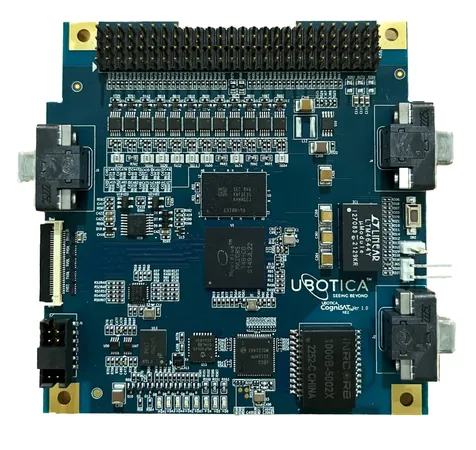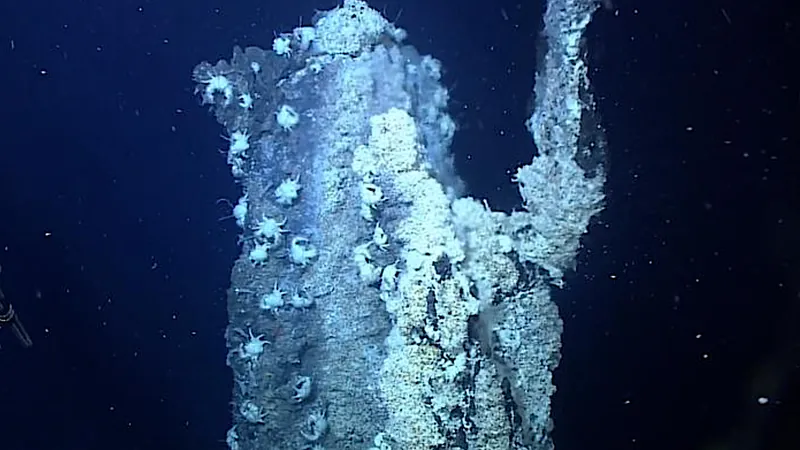
NASA's Bold Leap into AI: Autonomous Spacecraft to Transform Earth Observation!
2025-07-28
Author: Noah
NASA's Breakthrough with AI-Driven Autonomy
Imagine a spacecraft that can independently scan its orbital path and analyze imagery at lightning speed—thanks to cutting-edge AI! This is the reality with NASA's latest test of the CogniSAT-6 satellite, designed by the innovative Irish company Ubotica. In less than 90 seconds, this spacecraft can decide where to aim its instruments without any human input, marking a revolutionary step for autonomous Earth Observation (EO).
The Minds Behind the Magic
Ubotica's CEO, Fintan Buckley, believes their AI-enabled technology is poised to revolutionize various applications, including real-time wildfire detection, monitoring elusive dark vessels, and enhancing climate science. The CogniSAT-6 launched aboard SpaceX's Transporter-10 mission from Vandenberg Space Force Base in March 2024, setting the stage for groundbreaking research.
Dynamic Targeting: A Game Changer!
This mission featured a pioneering trial of Dynamic Targeting, a technology crafted by NASA's Jet Propulsion Laboratory (JPL). The system allows spacecraft to analyze terrain in real-time, enabling autonomous decision-making—like avoiding cloud-covered areas and homes in on valuable data instead. Steve Chien, a key technical fellow at JPL, likens the spacecraft's operations to human perception, emphasizing the shift from simple data capture to smart interpretation.
How Does It Work?
Equipped with a forward-tilting optical sensor, the CogniSAT-6 scans the landscape ahead, acquiring images that include visible and near-infrared light. Its Dynamic Targeting algorithm analyzes these images, directing the sensor towards cloud-free views—all within an astonishing 60 to 90 seconds, as the spacecraft races through low Earth orbit at nearly 17,000 mph!
Clouds Beware: Dynamic Targeting in Action!
In its inaugural test, the CogniSAT-6 wasn’t searching for specific phenomena but rather focused on eliminating the ubiquitous cloud cover that hinders EO satellites—often obscuring up to two-thirds of potential observations. By looking 300 miles ahead, the system can differentiate between clouds and clear skies, ensuring that imagery taken is both useful and data-efficient.
What’s Next for NASA?
Having successfully demonstrated cloud avoidance, NASA is gearing up for its next steps, including seeking out severe weather and identifying thermal anomalies like wildfires and volcanic eruptions. The JPL team has crafted specialized algorithms for these applications, further honing the capability of Dynamic Targeting.
From Space to Ground: Expanding Potential Applications
The implications of Dynamic Targeting extend beyond space. Researchers envision adapting the technology for Earth-based radar, enabling scientists to observe rare winter weather phenomena, such as deep convective ice storms. Furthermore, the technique could be implemented across multiple satellites, allowing coordination in tracking specific events.
Exciting Future Developments!
A pioneering test, dubbed Federated Autonomous Measurement (FAME), is set to launch later this year, unfolding new horizons for the future of EO. As this technology evolves, expect NASA's Dynamic Targeting to redefine how we observe and understand our planet!









 Brasil (PT)
Brasil (PT)
 Canada (EN)
Canada (EN)
 Chile (ES)
Chile (ES)
 Česko (CS)
Česko (CS)
 대한민국 (KO)
대한민국 (KO)
 España (ES)
España (ES)
 France (FR)
France (FR)
 Hong Kong (EN)
Hong Kong (EN)
 Italia (IT)
Italia (IT)
 日本 (JA)
日本 (JA)
 Magyarország (HU)
Magyarország (HU)
 Norge (NO)
Norge (NO)
 Polska (PL)
Polska (PL)
 Schweiz (DE)
Schweiz (DE)
 Singapore (EN)
Singapore (EN)
 Sverige (SV)
Sverige (SV)
 Suomi (FI)
Suomi (FI)
 Türkiye (TR)
Türkiye (TR)
 الإمارات العربية المتحدة (AR)
الإمارات العربية المتحدة (AR)